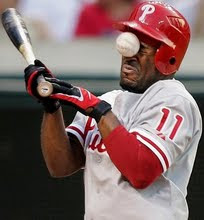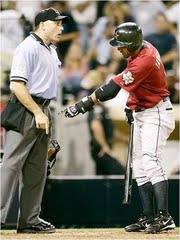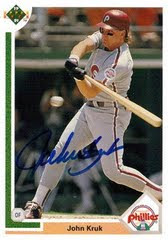January 9, 2009
Let Freedom Ring
Busting the Myth of the Salary Cap
Small-market teams love salary caps. Or rather, they think they do. At least on paper, caps stop teams in New York, Boston, and Chicago from oligopolizing the free-agent market, and should therefore help level the economic playing field. And, to a certain extent, they do; a small-market team in a capped league is more likely to acquire or retain top-tier talent. But there's a catch. That same small-market team will need to win, and keep winning, just to stay financially viable. And sometimes, winning might not even be enough.
Let's say, in some far-off universe, MLB owners and players actually did agree on a salary cap. With it would come the normal provisions: a salary floor at around 75-85 percent of the cap, and a guaranteed percentage of total industry revenues for the players. Since the players have been taking in about 45 percent of revenues the past few years, we'll keep it at that figure (the other three major sports leagues, which are all capped, each pay out over 50 percent).
Using 2008 as an example, the thirty teams took in about $6 billion (not including MLB Advanced Media revenue), for an average of $200 million per team. Forty-five percent of that (the players' share) is $90 million, which we'll use as the midpoint between our floor and cap. If we want to make the floor 75 percent of the cap (a low-end figure, relative to the other leagues), we can use $77 million and $103 million, respectively.
With a $103 million cap, nine teams would have been affected last year, and a total of about $286 million would have had to be skimmed off the top. Since total salaries have to remain at existing levels, the bottom twenty-one teams would have had to take on this burden, which had previously been placed on the Yankees, Red Sox, et al. On the other end, fourteen teams would have been under the payroll floor, by a total of $251 million. Even discounting the Marlins' $22 million payroll, the other thirteen teams would have had to spend an average of $15 million more just to meet the minimum. Some of those teams might be able to afford it; most wouldn't.
Imagine being Frank Coonelly in this situation. Coonelly, the Pirates' team president, has publicly supported a cap. Had our fictional cap/floor arrangement been instituted last year, the Pirates would have needed to increase their Opening Day payroll by $28 million. Not only would the team have taken a big loss, but Neal Huntington's long-term strategy would have been sabotaged, since the team would have had to sign a number of veterans just to meet the minimum payroll.
Now fast forward to 2009. Let's say the Pirates' sales staff runs into major headwinds, with the team struggling and the economy sinking. The team's top line takes a hit, falling $10 million from 2008. The Mets and Yankees, meanwhile, open their new ballparks, and each team increases its local revenue by $50 million. If the twenty-seven other teams are flat, total industry revenues rise by $90 million (not including any appreciation in national media revenue). Forty-five percent of that, of course, goes to the players. So even as the Pirates' purchasing power decreases, the payroll floor actually rises.
In other words, without a more egalitarian distribution of income, the system crumbles.
Until recently, the NFL has been uniquely fit for this type of model, since most of its revenues have come from national television contracts. But now, with local revenues rising, small-market teams are feeling the pinch. This past May, the owners unanimously voted to opt out of their CBA, which was supposed to run through 2012. Some blamed the players' share of revenues. Others, including Dan Rooney of the Steelers, cited the need for more local revenue sharing.
But sharing local revenue has a major drawback: it is a tax, which inevitably lowers incentives and decreases output. If the NFL shared all (or even most) local intake, why would an individual team ever look to maximize revenues at its own cost (i.e. by hiring a sales staff, or cleaning its own stadium)?
The NHL, which also has a hard cap, does very little revenue sharing, partly thanks to an overly convoluted system. On a league-wide level, the results have been very positive; the NHL has had record revenues every year since its lockout, and Gary Bettman has been very positive about this season as well. But the NHL is a great example of why caps and capitalism don't mix: as the league grows, it ends up leaving teams behind. Small-market clubs like the Columbus Blue Jackets and the Nashville Predators are forced to spend almost two-thirds of their revenue on player payroll. And the Phoenix Coyotes, after years of hemorrhaging money, are on the verge of going bankrupt.
So what's the best solution? Certainly not the NBA's soft-cap system, which has too many problems to even count—imagine having to take on Luis Castillo or Carl Pavano every time you wanted to unload a high-priced veteran.
So instead of these models, what if there was an uncapped league, with limited local revenue sharing to support small-market teams, and a post-season system that naturally created tremendous parity? Does this sound familiar? It should. It's what MLB has had in place for over a decade, leading to record growth in both attendance and revenue.
The expanded postseason is key. More than any other sport, MLB's playoff system acts as an equalizer. Fair or not, in broad strokes, a team that wins 83 games in a bad division has as much chance of winning the World Series as the Yankees or the Red Sox. Seemingly, no matter how much those teams spend over the winter, that competitive advantage is neutralized come October.
So while the capped leagues all struggle to find the right balance between capitalism and socialism, baseball continues to prosper operating within a much more free-market system. Teams in big markets and small markets alike are making money, and everyone has a chance to win it all.
If it ain't broke, don't fix it. And right now, baseball is anything but broke.
(Note: All salary data taken from the Lahman Database.)







1 comments:
I actually think the basketball system is the best. Look at the Grizzlies/Lakers trade last year. Lakers unloaded crappy guys with huge contracts but were expiring and got back a great player in Pau Gasol. Clearly, Lakers got a HUGE benefit and the Grizzlies got a "Carl Pavano" Yet this "Pavano" equivalent made no bearing on the Grizzlies and now they have a good young core and lot of cap room.
I don't know exactly which logical fallacy you used when describing why the MLB shouldn't adopt the NBA system, but you did. The "Carl Pavano" thing is such a trivial matter in the general scheme of the entire system that even though you may view it as a flaw, it's such a minor one, that you really didn't consider the system as a whole. Plus, it does work even if you do have to pick up an old shitty player.
Each team in the NBA had a similar amount of money to give to all it's players. This is a great equalizer to even the playing field, to make sure free agents don't get a shitload of money like C.C. and Teixeira.
The NFL system would work too if unproven rookies didn't get a shitload of money. AND this will soon happen in the next upcoming years.
The baseball system is most certainly broke and not perfect by any stretch. Now it seems to be the salary cap/ floor is not better than the system they have now but that doesn't mean another alternative can't be put in place.
Post a Comment